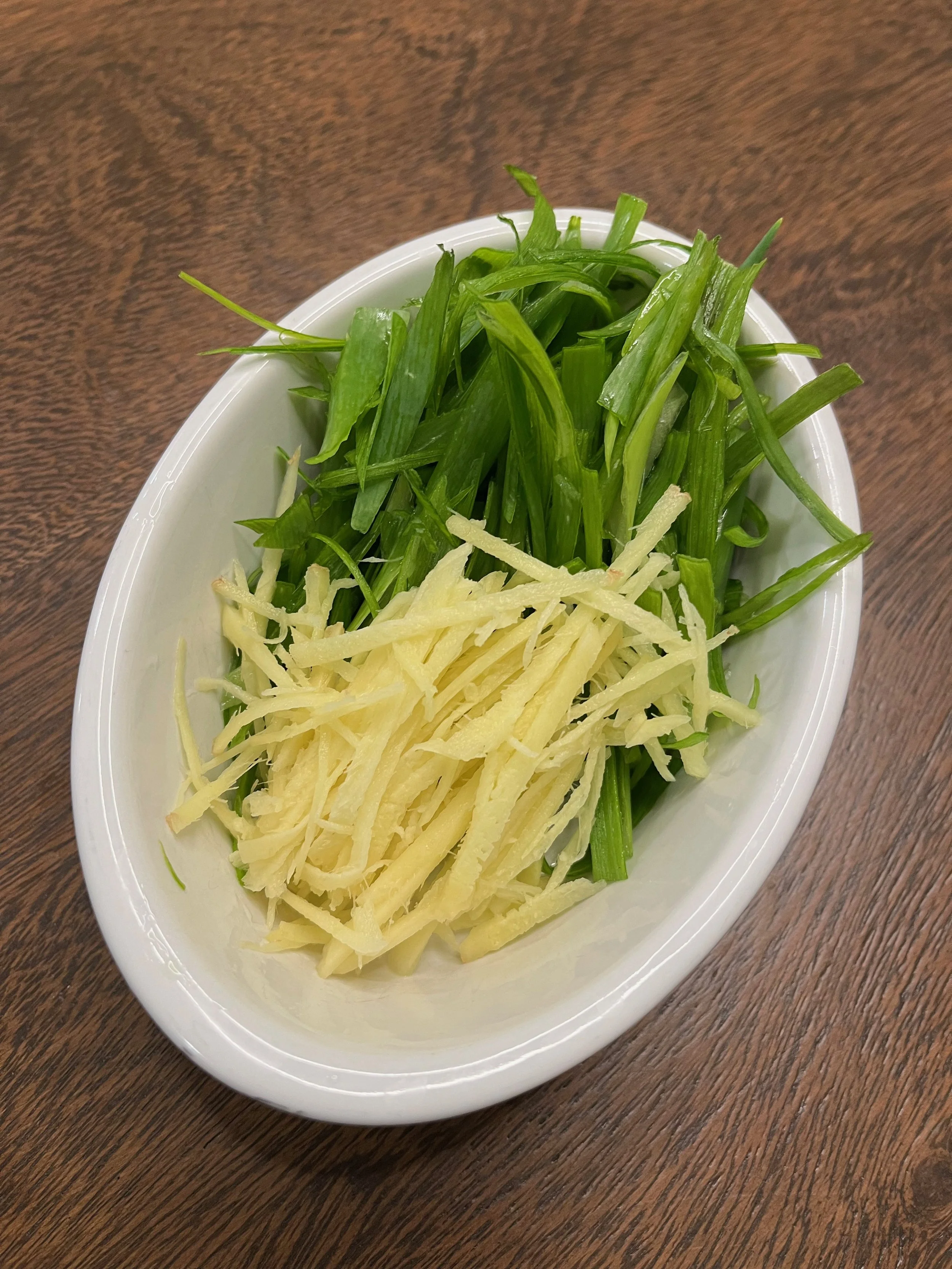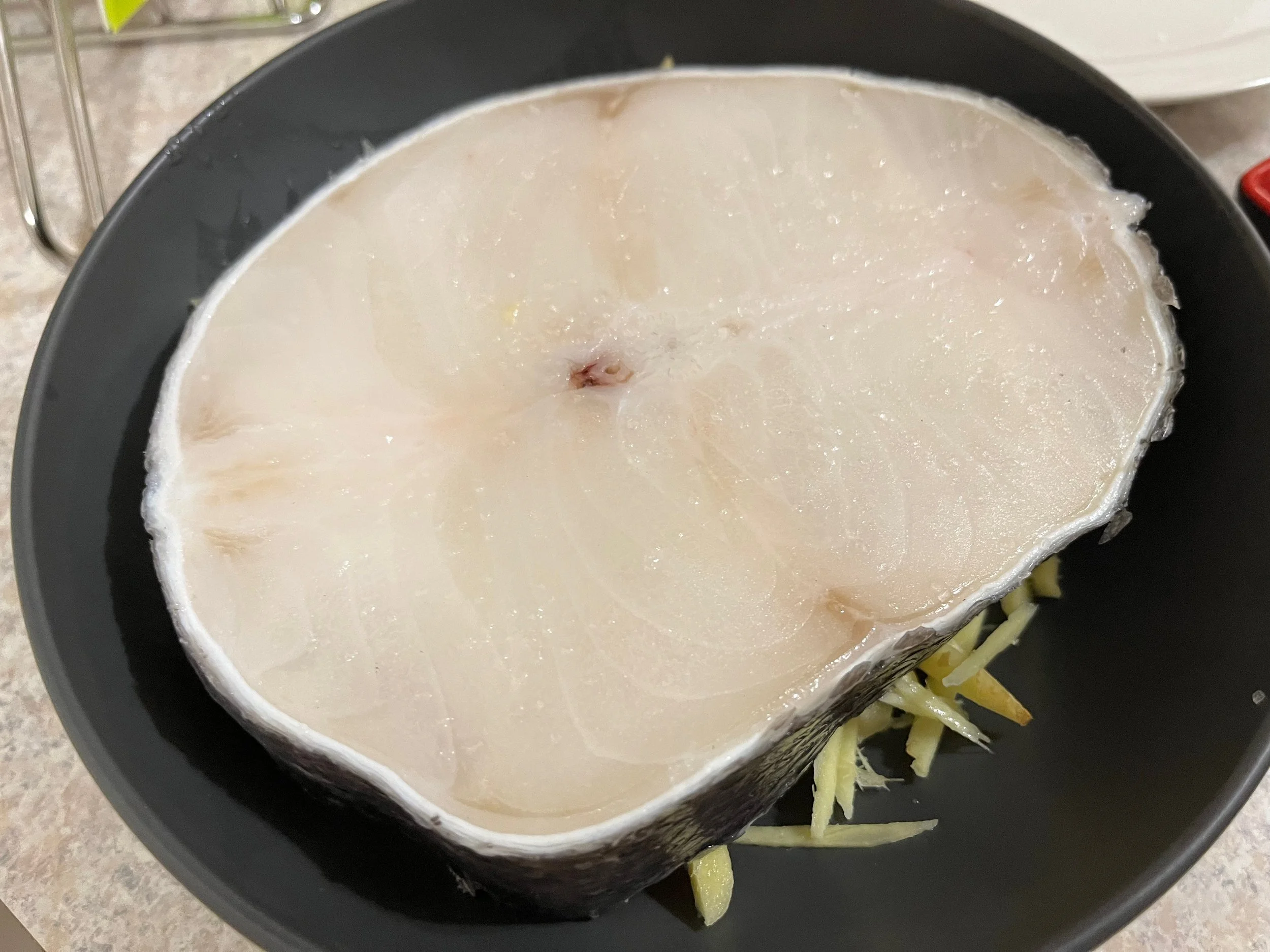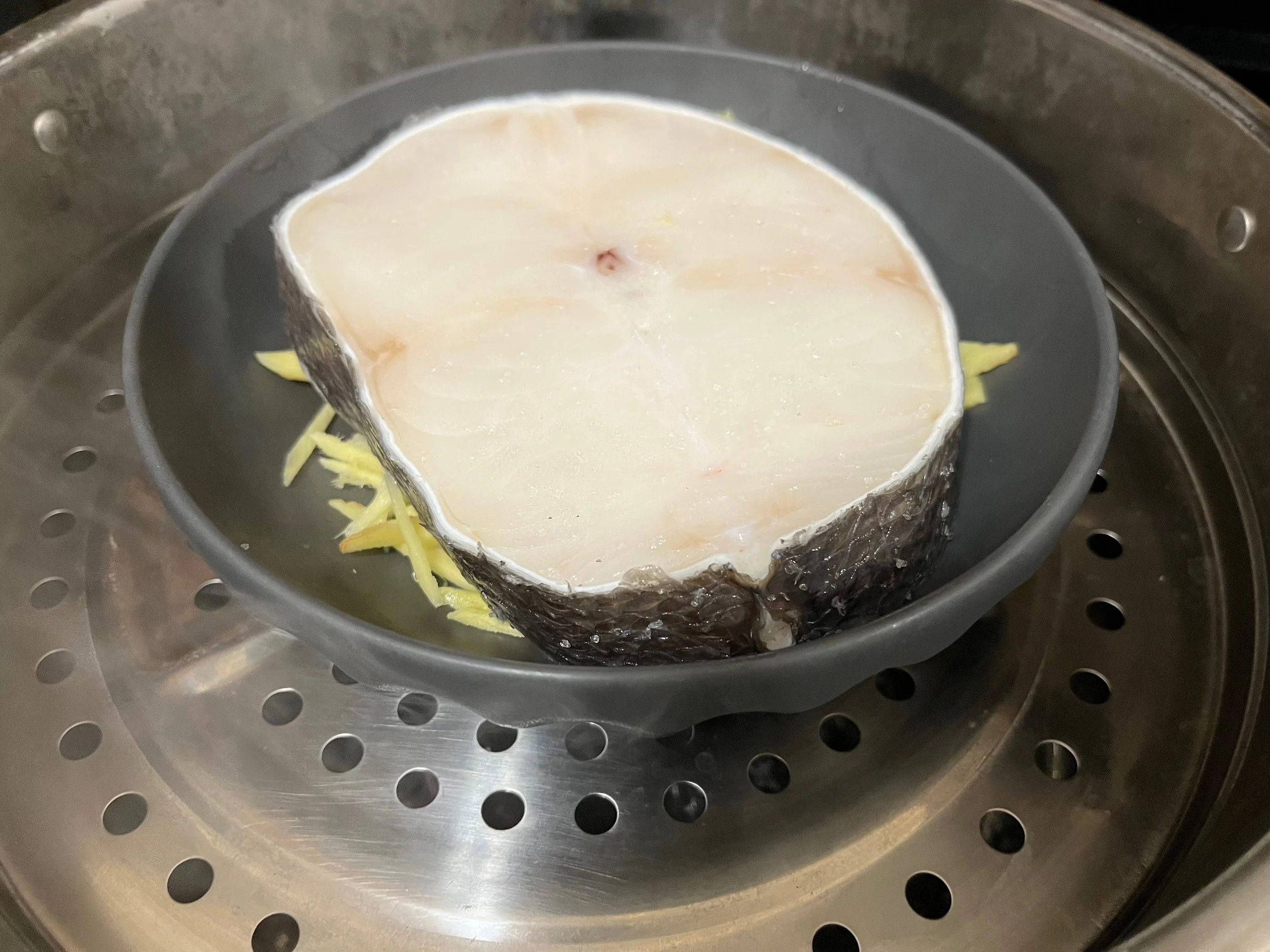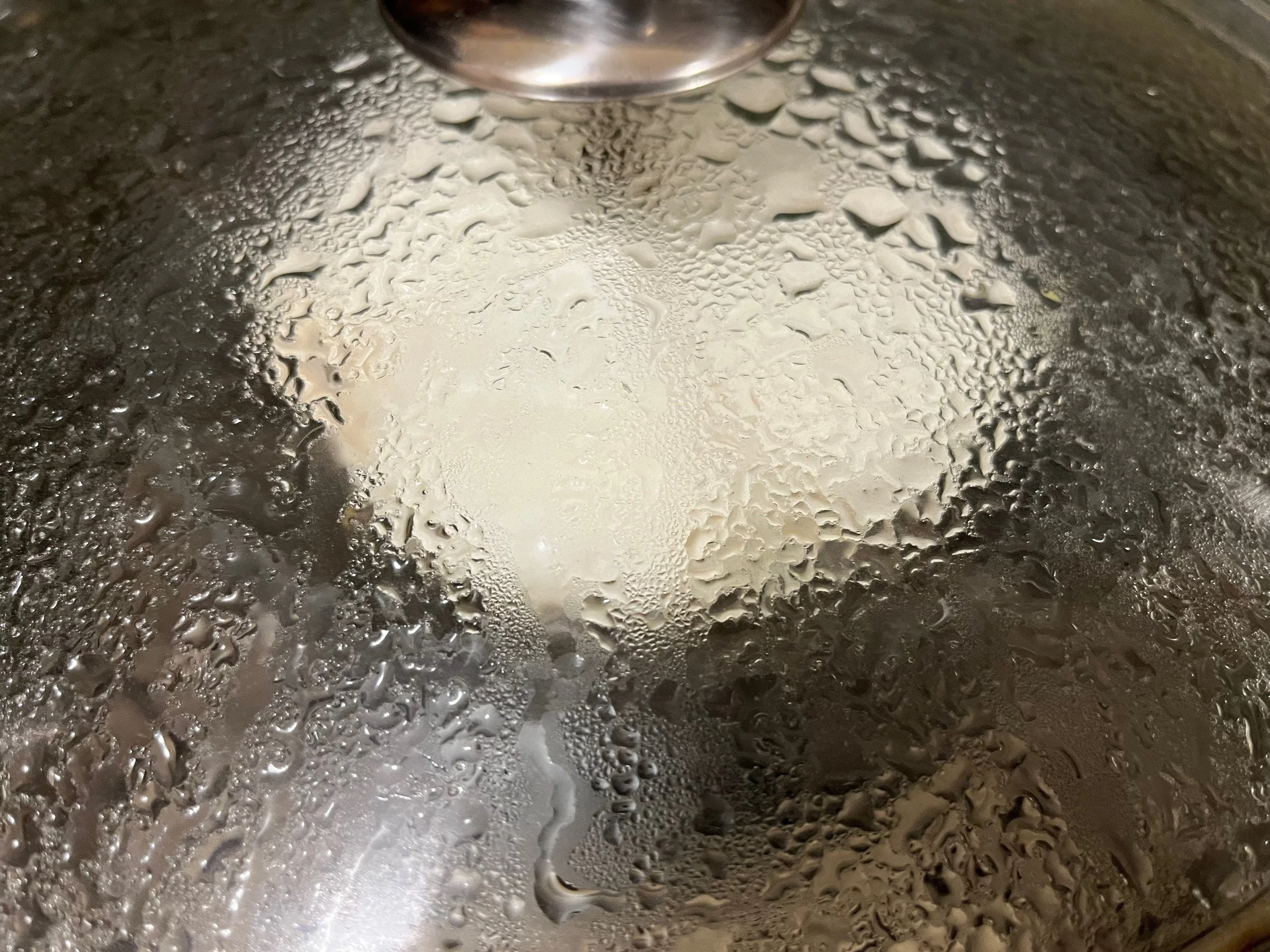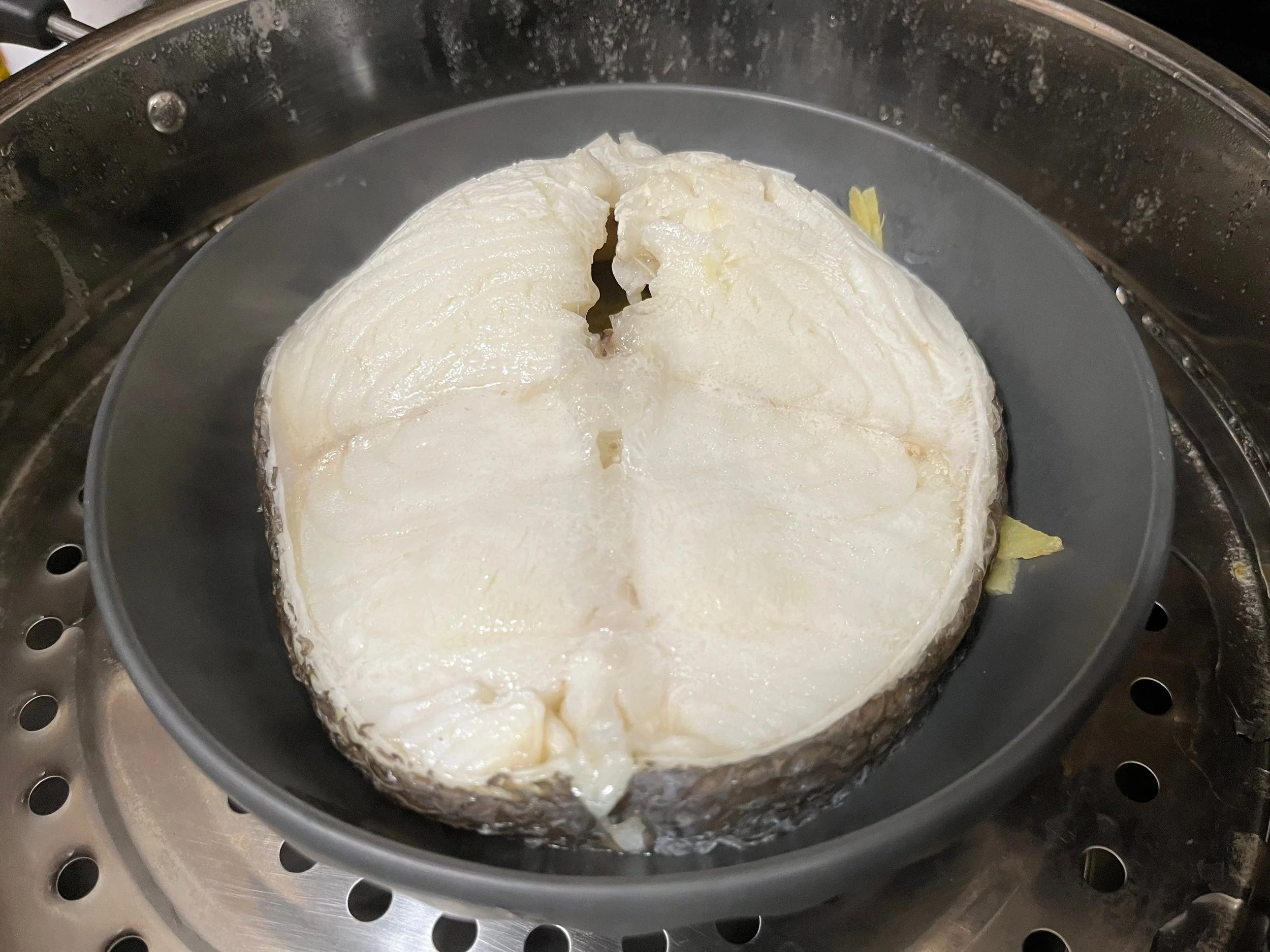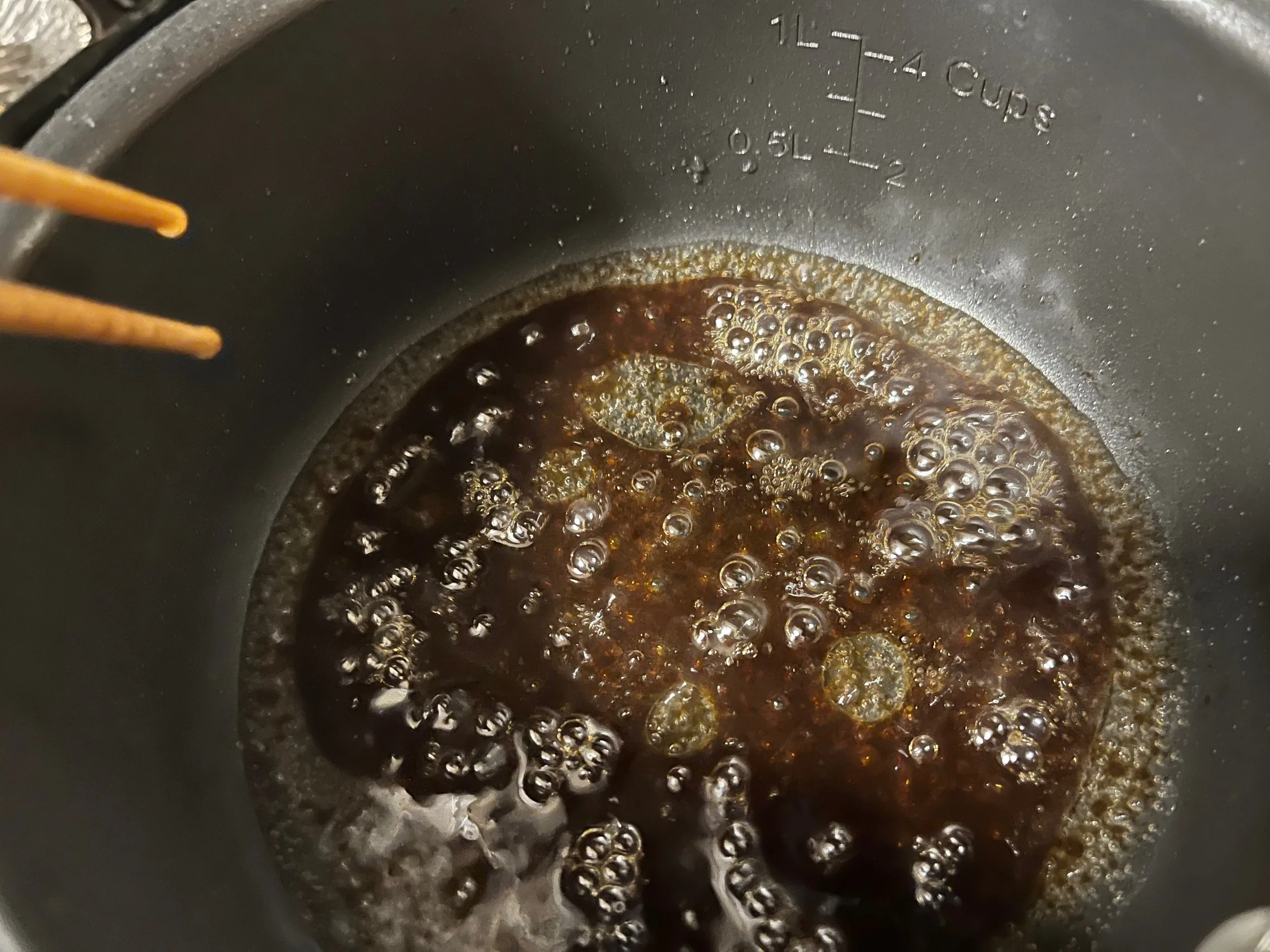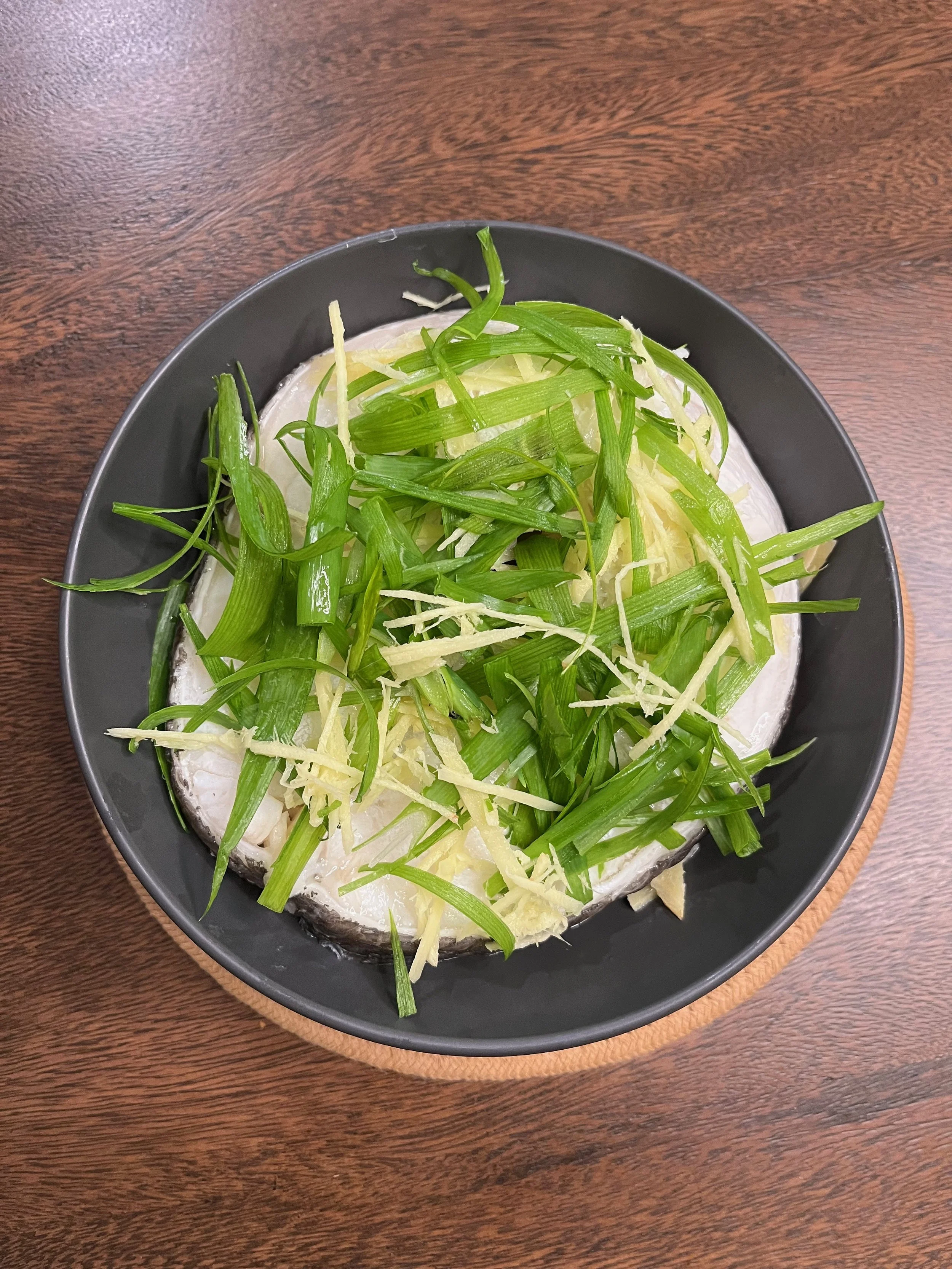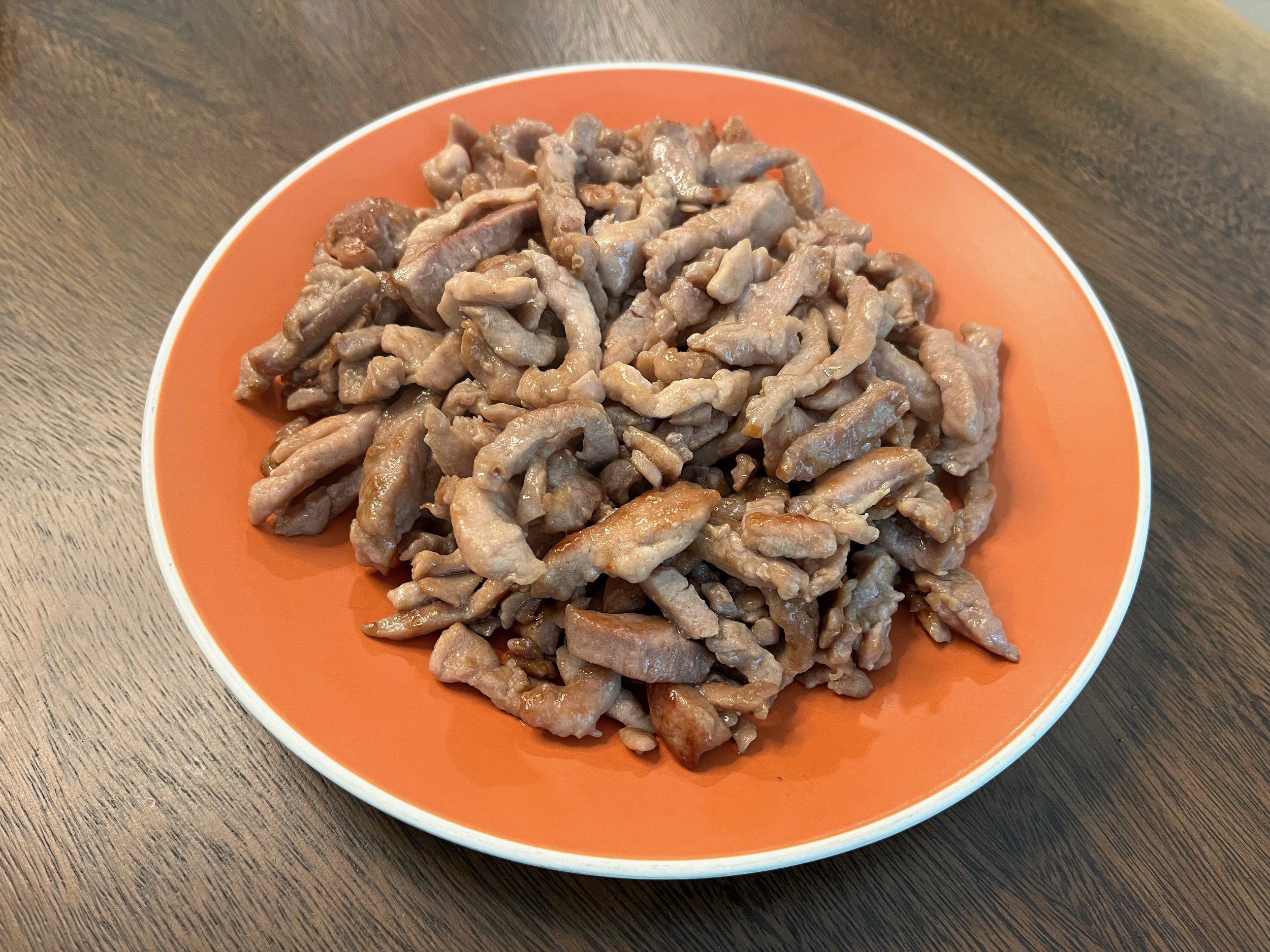Steamed Chilean Seabass
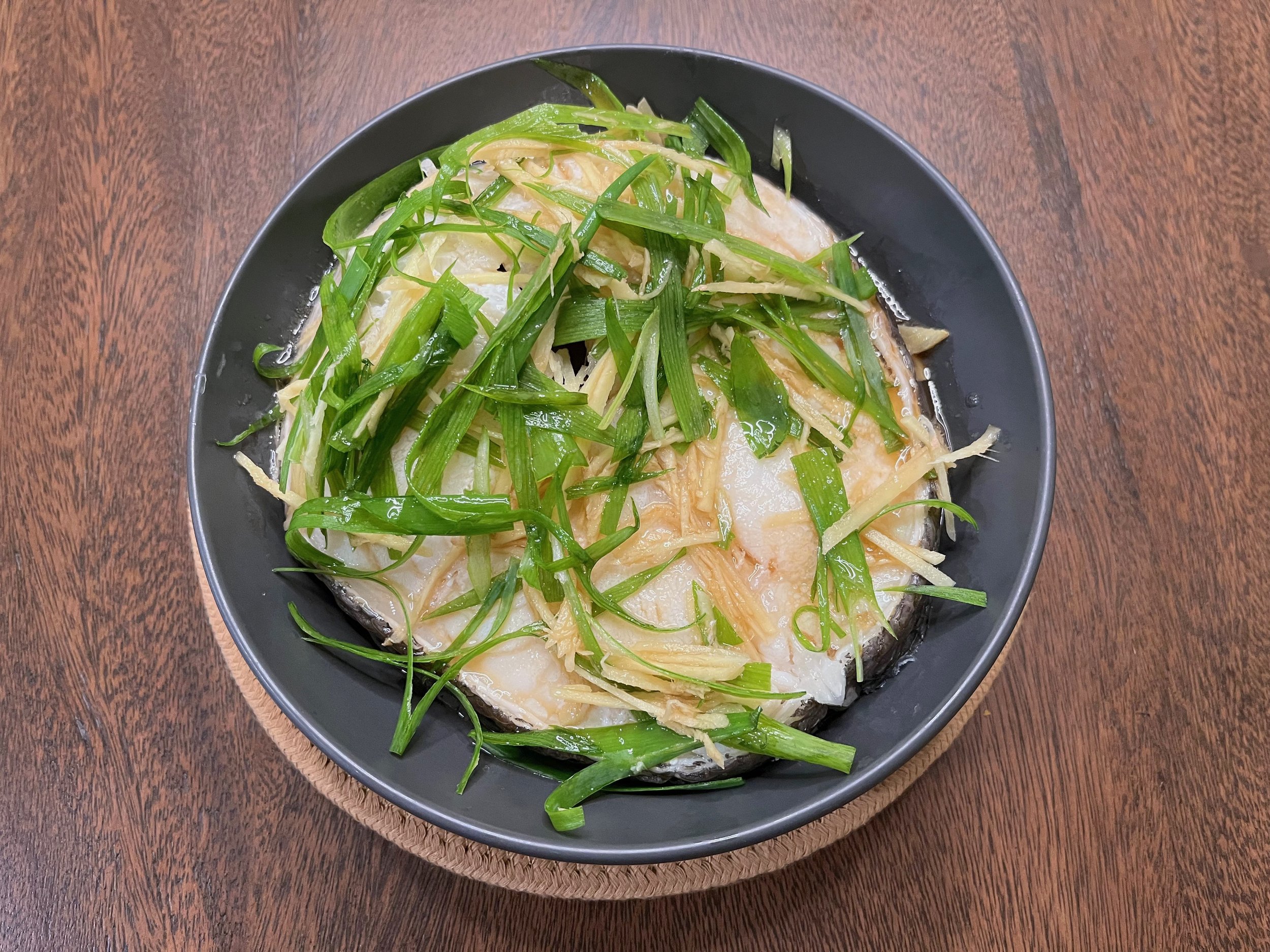
蒸海鱸魚 (Zheng Hai Lu Yu)
Chilean seabass is the marketing name for the Patagonian toothfish, dreamt up by an American seafood merchant in the late 1970s to make the then-obscure fish more attractive to western customers [1]. Patagonian toothfish (Dissostichus eleginoides) are deep-water fish native to the southern oceans, capable of growing up to 100 kg (though most commercially caught toothfish are closer to 10 kg). The large size and rich flesh of the toothfish made it a hit with American consumers, resulting in skyrocketing demand and high pressure on the wild population. Like most deep-water fish, Patagonian toothfish reproduce slowly when compared to their counterparts closer to the surface, making them particularly vulnerable to overfishing.
By the late 1990s illegal fishing of toothfish in the Southern Pacific was rampant, with higher illegal catch totals than legal ones and leading to a well-publicized environmental campaign in the United States to reduce consumption of the fish. In response, efforts to track and intercept illegal fishing vessels were stepped up, primarily by the Royal Australian Navy, Royal New Zealand Navy, and Interpol. Simultaneously, independent operations were carried out by the marine activist group Sea Shepherd, including an epic 110-day pursuit of the pirate fishing ship Thunder by the MY Bob Barker across the Southern Pacific and Atlantic Oceans which eventually resulted in the scuttling of the Thunder [2].
While illegal fishing of toothfish was being suppressed, legal fisheries were taking steps to reduce bycatch of endangered fish and seabirds in a bid to get certified as sustainable and return to American supermarkets. Today, the majority of toothfish/Chilean sea bass fisheries meet the Marine Stewardship Council criteria for sustainability [3]. While it is still more difficult to scientifically assess the populations of deep-water species when compared to shallow-water species, many now view the toothfish saga as a success story for fisheries management—an example of how scientists, activists, governments, and fishermen can work together to develop and maintain an economically important industry while reducing environmental impact and encouraging conservation.
From a culinary point of view, we’re glad that toothfish/Chilean seabass is back on the menu because it is a versatile and delicious fish. Its delicate flavor makes it an ideal choice for steaming. This simple Chinese preparation pairs the seabass with fresh ginger, scallions, and a simple sauce.
Ingredients
1 lb Chilean seabass steak or fillet
2 in ginger, julienned
4 scallions
1 tbsp soy sauce
1 tbsp Shaoxing rice wine
2 tsp vegetable oil
Salt to taste
Begin by patting the Chilean seabass steak or fillet dry with a paper towel, then season both sides of the fish with salt. Remember that ocean fish tend to be salty on their own, so don’t overdo it! Next we will prepare the aromatics—the ginger and the scallions. As some of these aromatics will be served raw, use a clean cutting board and knife for this! Peel and finely julienne the ginger, producing narrow matchsticks. Cut the scallions roughly in half, separating the scallion whites from the scallion greens. Set the greens aside for later, and trim the roots from the scallion whites.
This dish will naturally require a steamer basket large enough to fit your fish. Fill your steamer with water and bring it to a boil. While the steamer comes up to temperature, we prepare the dish itself.
On a heat-safe plate which can fit into your steamer, lay the scallion whites down, along with about half of our ginger. These aromatics will keep the fish from direct contact with the plate, helping the fish cook more uniformly. The scallions will also contribute some flavor to the fish. Place the fish into the steamer basket and steam until the fish is cooked through—the flesh should flake easily and the juices should run clear. This will take about 10-15 minutes in the steamer, depending on the size of your steak or fillet.
While the fish steams, julienne the scallion greens and set aside, together with the remaining julienned ginger. In a saucepan, we will make a simple sauce by combining the vegetable oil, soy sauce, and rice wine. Mix well and bring to a low simmer. We want the sauce to be hot when the fish is done. When the cooked fish comes out of the steamer, pile the reserved scallions and ginger onto the steak or fillet, drizzle over the sauce, and serve immediately!
Substitutions
This recipe also works well with other relatively oily white fish such as halibut or flounder. If you’d like to add a bit of spice to the dish, add some chopped fresh chiles before steaming.
[1] The Patagonian toothfish is also marketed as “icefish” in the United Kingdom.
[2] More on the MY Bob Barker’s epic pursuit can be found here from the New York Times.
[3] Check the Monterey Bay Aquarium Seafood Watch for the most up-to-date information.
Recipe
Prep Time: 10 min Cook Time: 15 min Total Time: 25 min
Difficulty: 2/5
Heat Sources: 2 burners
Equipment: steamer, saucepan
Servings: 4
Ingredients
1 lb Chilean seabass steak or fillet
2 in ginger, julienned
4 scallions
1 tbsp soy sauce
1 tbsp Shaoxing rice wine
2 tsp vegetable oil
Salt to taste
Instructions
1. Pat the fish dry and season both sides with salt.
2. Peel and julienne the ginger. Remove the scallion tops and reserve them. Trim the roots from the scallions, so we are left with the whole scallion whites.
3. Lay the scallion whites on a plate capable of fitting in your steamer, along with ½ of the julienned ginger, and put the fish steak on top of the scallion whites and ginger.
4. Place the fish into the steamer, and steam until the fish is cooked through and flakes easily, about 10-15 minutes depending on the size of the fish.
5. Meanwhile, julienne the scallion greens.
6. In a saucepan, combine the vegetable oil, soy sauce, and rice wine. Mix well and bring to a simmer.
7. Carefully remove the fish from the steamer, pile on the julienned scallion greens and remaining julienned ginger, and drizzle over the sauce.


